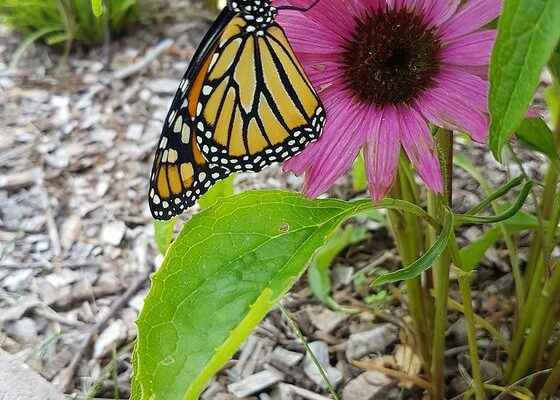A group of native plant enthusiasts is hoping to get more Chatham-Kent residents on board this year with their project to ensure pollinators can thrive across the municipality.
Chandra Clarke, a lead ranger for the Chatham-Kent Butterflyway group, said they were able to get 42 local pollinator patches onboard in the local project’s first year.
“The concept behind this is to get enough urban butterfly patches that it forms a butterfly way or a highway, in human terms, so there is enough food and host plants throughout Ontario, even in urban areas, that we can bring back some of this natural habitat and support pollinators,” she said.
Clarke said members of the group needed to have identified or started at least 30 patches to receive a designation from the David Suzuki Foundation, which they achieved last year. The designation puts Chatham-Kent on the official map for the Canada-wide Butterflyway Project.
Her goal this year is to bring in more pollinator patches to Chatham-Kent and spread the word to other areas. She’ll be speaking to the Dutton Dunwich Horticultural Society over Zoom on April 18 at 7:30 pm
For someone looking to join the project, Clarke said to search for and join the Chatham-Kent Butterflyway Facebook group. She said there are members who are providing tips and seeds to get started.
“You can start as simply as a container planting on your balcony or on your porch or something like that and pick a native plant that’s suitable for pollinators – something like milkweed or cardinal flower for humming birds – or you can go out and put an entire patch in the ground,” she said.
One person has encouraged the owner of her apartment building to convert the gardens to have all native plants, Clarke said. She said she hopes members of service clubs will also encourage other members to move away from choosing plants based on the color or ease of growth.
Some easier native plants to start with, Clarke said, are the purple coneflower, black-eyed Susan or milkweed for the monarch butterfly.
“That (milkweed) is great for them to lay their eggs, but they also need food throughout the rest of the year,” she said. “Milkweed is good, but also native asters in the fall. Those are fabulous for them to eat.”
Clarke said these types of plants are usually sold in late April and May and seeds can usually go in the ground after frost.
She said she was encouraged last year by a council bylaw that allows homeowners to plant native plants in their front yard so long as they stay within property standards. Clarke said many front lawns are built more for humans than pollinators.
“The goal is to make some really nice landscapes that also happen to be good for pollinators,” she said.
Clarke said encouraging pollinators is important because their activity helps food crops and they are also a necessary part of the food chain for other creatures.
